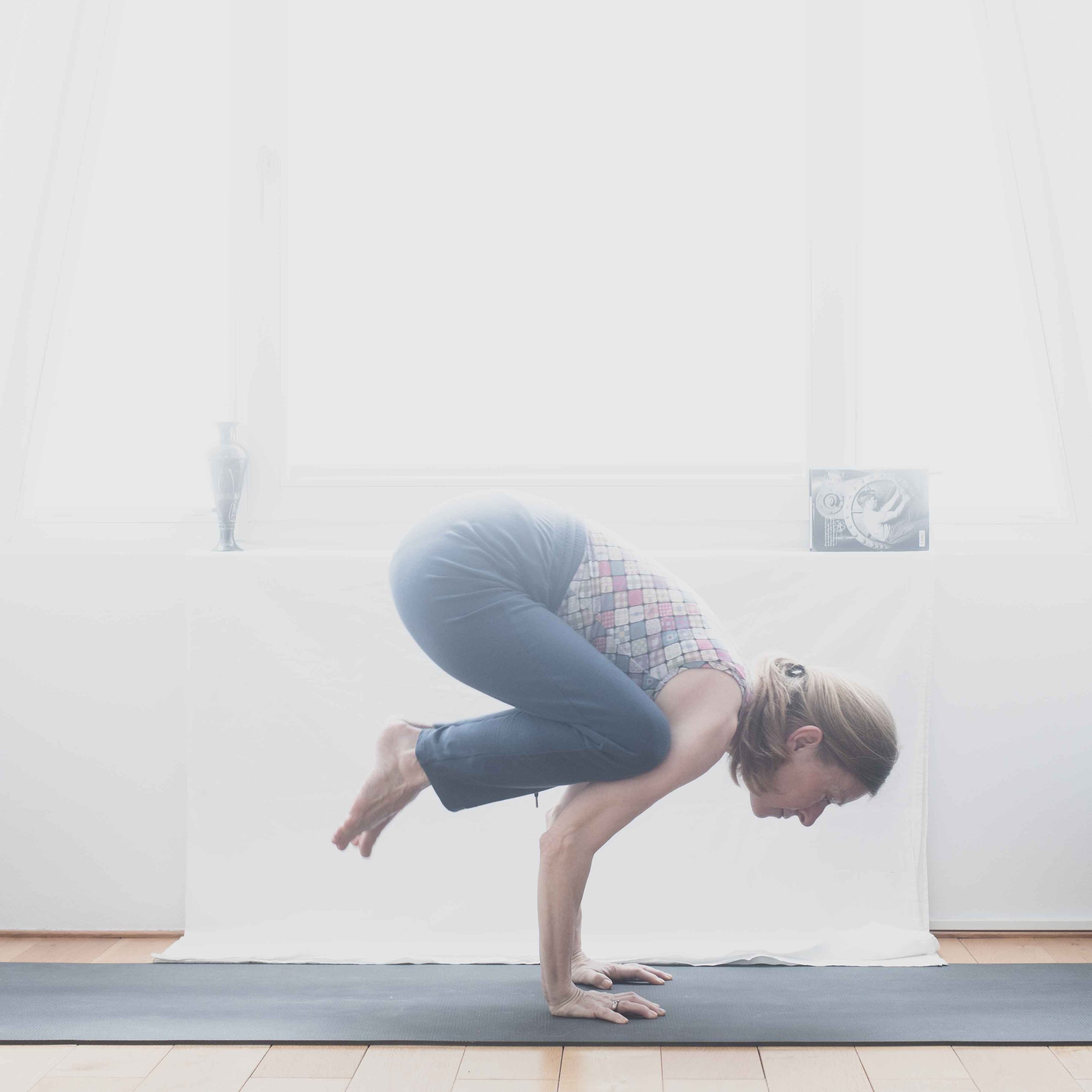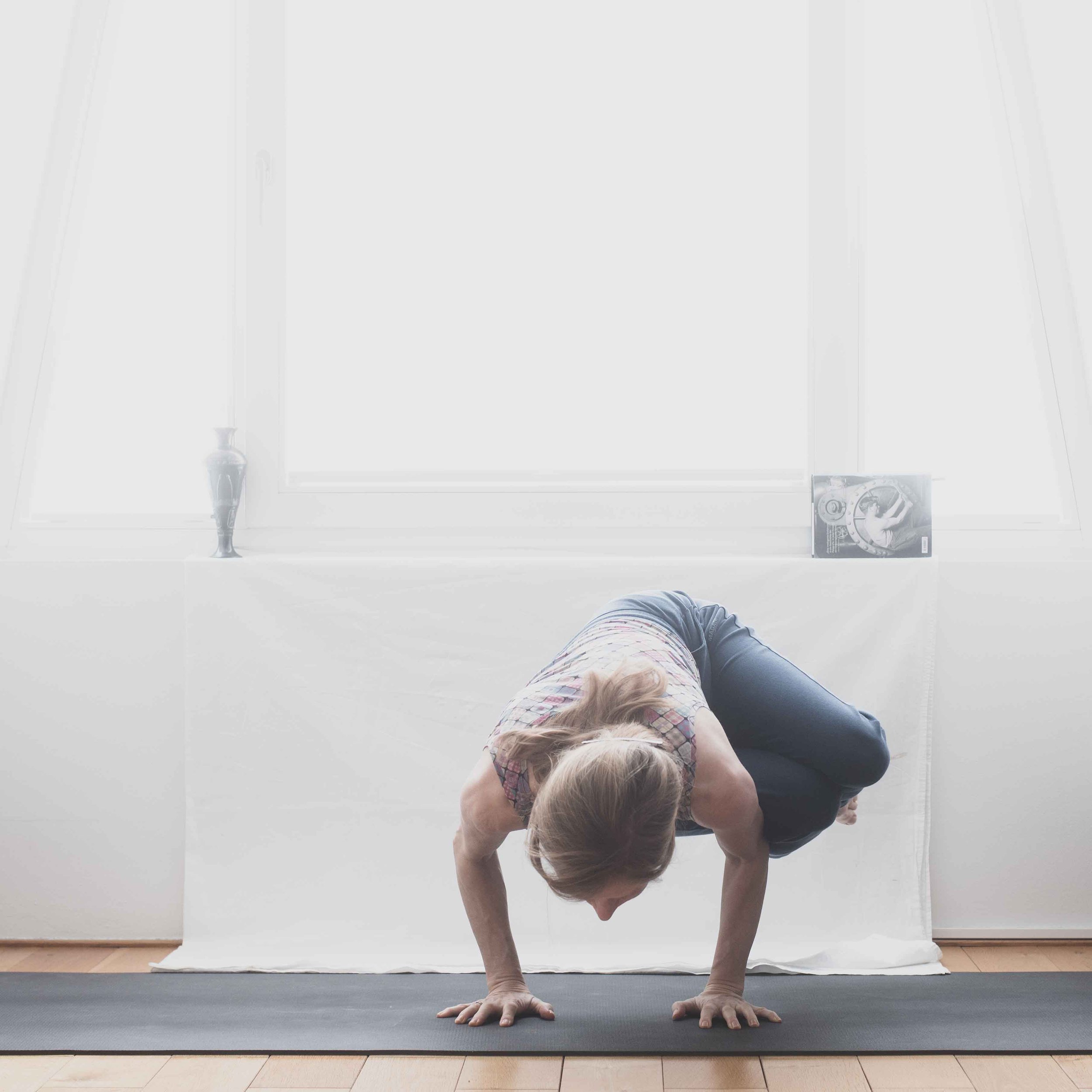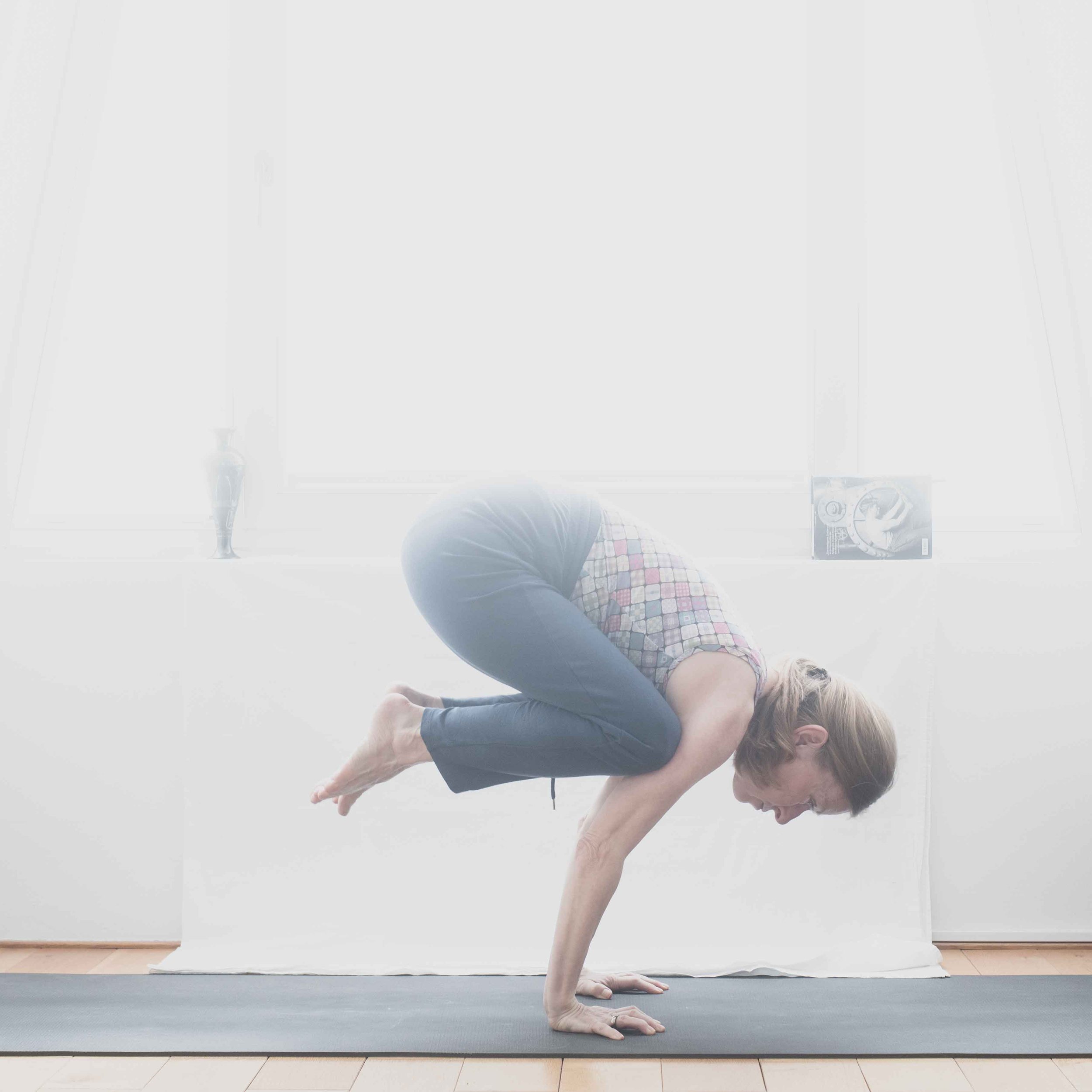Craw and crane - different yoga poses
On Saturday I went to the asana coaching workshop. We were four women. One of them wanted to learn the crow. The crow is called kakasana in Sanskrit. In Ashtanga yoga, the crow is the pose you practise in the second series.
These two postures are usually mixed up.
Kakasana:
1. the elbows are slightly bent.
2. the shin crosses the upper arm before moving forward into the pose. This is how we were taught in the lesson. This is also an important difference to bakasana.
3. the back is straight.
4. you look forward.
5. try to turn your hands inwards. As a result, the elbows turn outwards.
6. the abdominal muscles are tensed.
Bakasana:
1. the arms are stretched. It is easiest to have the arms stretched from the start.
2. the knees are pressed against the arm near the armpits.
3. the shoulder blades pull apart. The back rounds. This ensures that the weight of the body is not only on the arms. The body is pulled upwards. You try to make the body light.
4 The rounded back makes you look downwards rather than forwards.
5. try to turn your hands outwards to keep your arms straight.
6. the abdominal muscles are tensed.
The woman who wanted to learn the crow was heavily overweight. I estimate that she was 30 kg overweight. Her joints could not support the weight. There are certainly overweight people who have such strong wrists that they can perform this pose without any problems. But that was not the case with the yogini in this class. It would have been better to tell the truth. If the woman had gone into the pose, she might have injured herself. She always stopped before the weight was on her arms. Sometimes it is more important to change your diet than to learn asanas that are not yet suitable.
My joints also hurt after a while. I took advantage of the time to practise the pose again and again and the rest of us also practised parsva bakasana, side crow. We shouldn't get bored while the woman who wanted to learn the pose kept trying to shift her weight forward onto her arms.
As I'm writing this, it occurs to me that the woman probably didn't have the strength to hold herself. I would make the following recommendation:
1. lose weight.
2. then strength training.
3. then practise the crow again.
4. under no circumstances give up.
I have become more aware of this pose since this workshop. Crow or crane is the basic pose for all arm balances.
Each individual must ultimately find and follow their own path to learn the postures they want to learn.
To the pictures:
On the far left I tried kakasana.
In the middle you can see parsva bakasana.
On the right, I tried to stretch my arms to get into bakasana.


